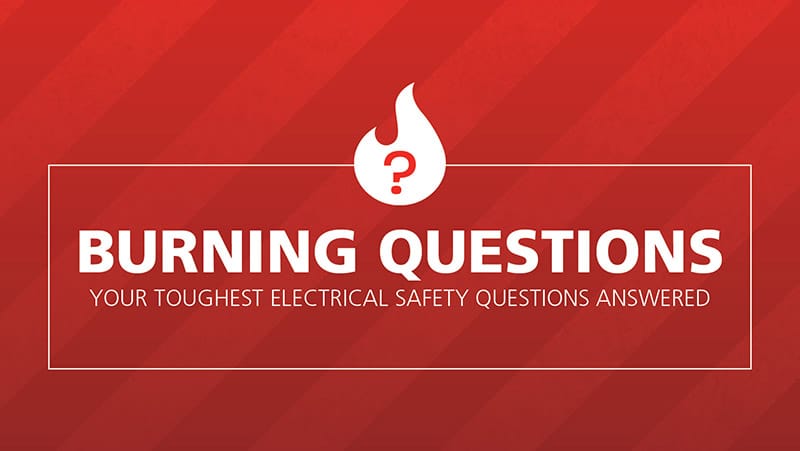Question: The OSHA 1910.269 Standard says Fall Protection Equipment has to be FR. Is this the same as Arc-Rated?
Answer: A harness is worn to protect the worker from falls. It isn't considered apparel.
It is not part of the arc-rated body protection as specified in OSHA 1910.269(l)(8), “Protection from flames and electric arcs.” According to OSHA 1910.269 and Subpart V, personal fall arrest equipment is required to be arc tested but not technically arc-rated.
OSHA 1910.269(g)(2)(ii) says, “Personal fall arrest equipment used by employees who are exposed to hazards from flames or electric arcs, as determined by the employer under paragraph (l)(8)(i) of this section, shall be capable of passing a drop test equivalent to that required by paragraph (g)(2)(iii)(L) of this section after exposure to an electric arc with a heat energy of 40±5 cal/cm².”
And OSHA 1910.269(g)(2)(iii)(G) requires work positioning equipment to pass specific dielectric, leakage, and flammability tests.
ASTM F887-12, “Standard Specifications for Personal Climbing Equipment,” requires personal climbing equipment to meet the requirements above so any harness meeting that standard meets the OSHA standard.
NFPA 70 also lists ASTM F887 as a reference standard for worker compliance for arc flash.
Technically, these harnesses are not “arc rated,” which would imply that they are for skin protection in the event of the arc. They are, however, tested with a 40-cal open air arc flash and drop tested afterward. They must pass the drop test.
When To Audit Harnesses
We recommend to audit harnesses in these 2 situations:
(1) If you use nylon tested to this standard (which is the most common harness) since the test is ONLY performed on NEW harnesses, and
(2) When harnesses fibrillate (get fuzzy from use). They can ignite at a MUCH lower level in our ArcWear’s arc flash testing.
Kevlar, Nomex and some other harnesses will not ignite even when fibrillated. But they do cost more. While e-Hazard and ArcWear know of NO harness tested to F887 which has failed in the field, it is wise to consider harness replacement when fibrillated or to use a harness with less risk.
Beware some harness companies sold ASTM F887 harnesses with a label which stated that they met the standard except for the arc test. These harnesses should be taken from service since they do not meet the current Federal OSHA law.
For More Information
If you have questions, contact ArcWear (for testing) or e-Hazard (for electrical safety training and consulting). Neither company sells PPE.
Have a question about electrical safety and standards?


What is the standard number that says harness must be tagged: Arc Flash tested?
ASTM F887 is the standard for safety harnesses. These harnesses must under an 40 cal/cm2 arc flash exposure and cannot show any signs of melting, dripping, or ignition. After exposure to the arc flash, these same harnesses must undergo post-arc drop tests that must be performed for compliance using ANSI/ASSE/ASSP Z359. Labeling should reflect compliance with the standard. Here is a very informative article on the subject. Let me know if you have further questions.
https://incident-prevention.com/blog/electrical-arc-flash-and-shock-hazards-for-fall-protection-using-astm-f887/